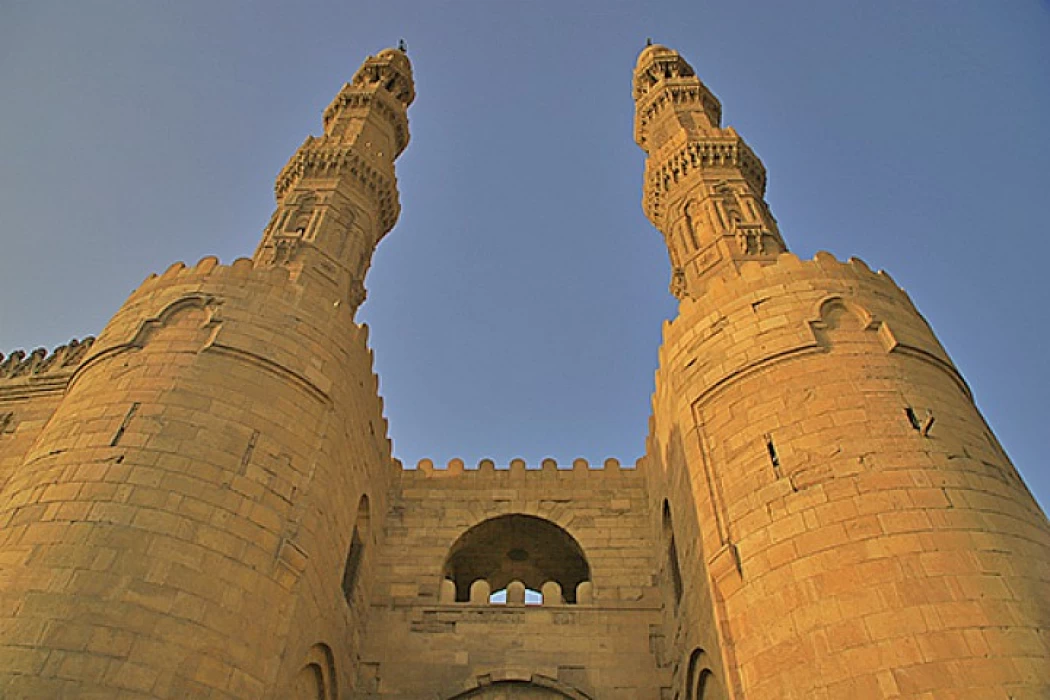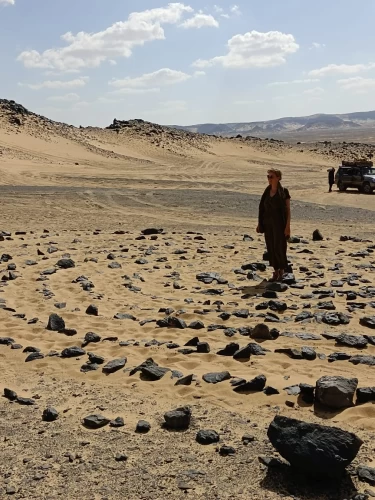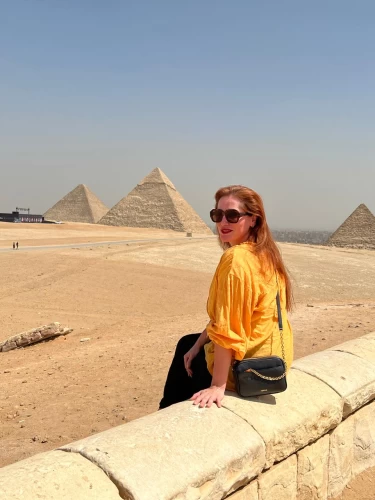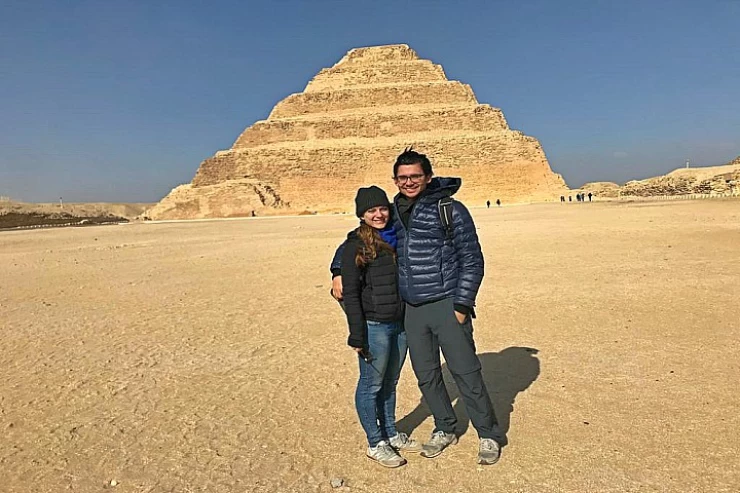
Bab Zuweila
Bab Zuweila | Gates of Cairo
Bab Zuweila served as the southern entrance to the city for numerous years during the Fatimid era and is recognized as one of the oldest and most significant landmarks in Cairo. Its construction dates back to 1090.
Within the Mamluke city, the Fatimid walls were integrated with the extensions made by Salah al-Din, establishing Bab Zuweila as a pivotal location in Cairo.
Biba Zuweila
Constructed in the 11th century by the Fatimid Vizier Badr El Gamali, Bab Zuweila in Cairo, Egypt, features a roof that offers sweeping views extending to the citadel.
This gate is among the few surviving entrances of ancient Cairo, adorned with two minarets. Bab Zuweila is regarded as the most exquisite of the three gates of Islamic Cairo and is celebrated for its architectural elegance. Ascending the minaret stairs provides visitors with diverse perspectives of Islamic Cairo and its enchanting architecture. We invite you to experience an unparalleled welcome in this blessed land of Egypt, facilitated by our knowledgeable and prepared guides.
In Egypt, one can visit Sabil Qitas, a place where numerous fascinating insights can be gained through exploration and observation of various exhibits.
Latest Articles
Admin
Aswan Governerate in Egypt
One of Egypt's southern governorates is Aswan Governorate. The city of Aswan serves as its capital. At a latitude of 22 north of the equator (also known as the Tropic of Cancer), it is bounded to the north by the Qena Governorate, to the east by the Red Sea Governorate, to the west by the New Valley Governorate, and to the south by the Republic of Sudan.
Admin
Luxor Governorate Egypt
The capital of the Arab Republic of Egypt is Luxor City, which was once known as "Thebes City" because it served as Egypt's capital during the Pharaonic era. It is situated in the South Upper Egypt region, approximately 670 kilometers from the capital Cairo from the south. It is bordered on the north by Qena Governorate, on the south by Aswan Governorate, on the east by Red Sea Governorate, and on the west by New Valley Governorate.
Admin
History of kafr El Sheikh Governorate
Kafr El Sheikh Governorate is an Egyptian governorate, located in the northernmost part of Egypt in the Nile Delta, with Kafr El Sheikh as its capital. It had a population of 3,172,753 in 2015 and an area of 3,748 km². Its entire area is located north of the delta and overlooks the Mediterranean Sea. The main economic activity of the residents of the governorate is agriculture and fishing, especially the southern lands of the governorate and the lands overlooking the Nile River - Rosetta Branch.
Admin
Egypt's New Administrative Capital
The New Administrative Capital is located between the Cairo-Suez and Cairo-Ain Sokhna roads, 60 km from Cairo and the same distance from Ain Sokhna and Suez. The New Administrative Capital is located on the border of Badr City, in the area between the Cairo-Suez and Cairo-Ain Sokhna roads, just after New Cairo, Mostakbal City and Madinaty.
Admin
Al Gharbia Governorate
Gharbia Governorate is one of the governorates full of archaeological sites, whether they are places or facilities (mosques, churches), as the governorate is a destination for visitors to these places throughout the year, whether they are Egyptians from the different governorates.
Admin
Hamata Islands (Qulaan Archipelago) in Marsa Alam
The Hamata area, south of Marsa Alam in the Red Sea, is one of the most important parts of the Wadi El Gemal Reserve, whether in the desert or the sea. It was named after the sorrel plant, which was distorted to Hamata.

















